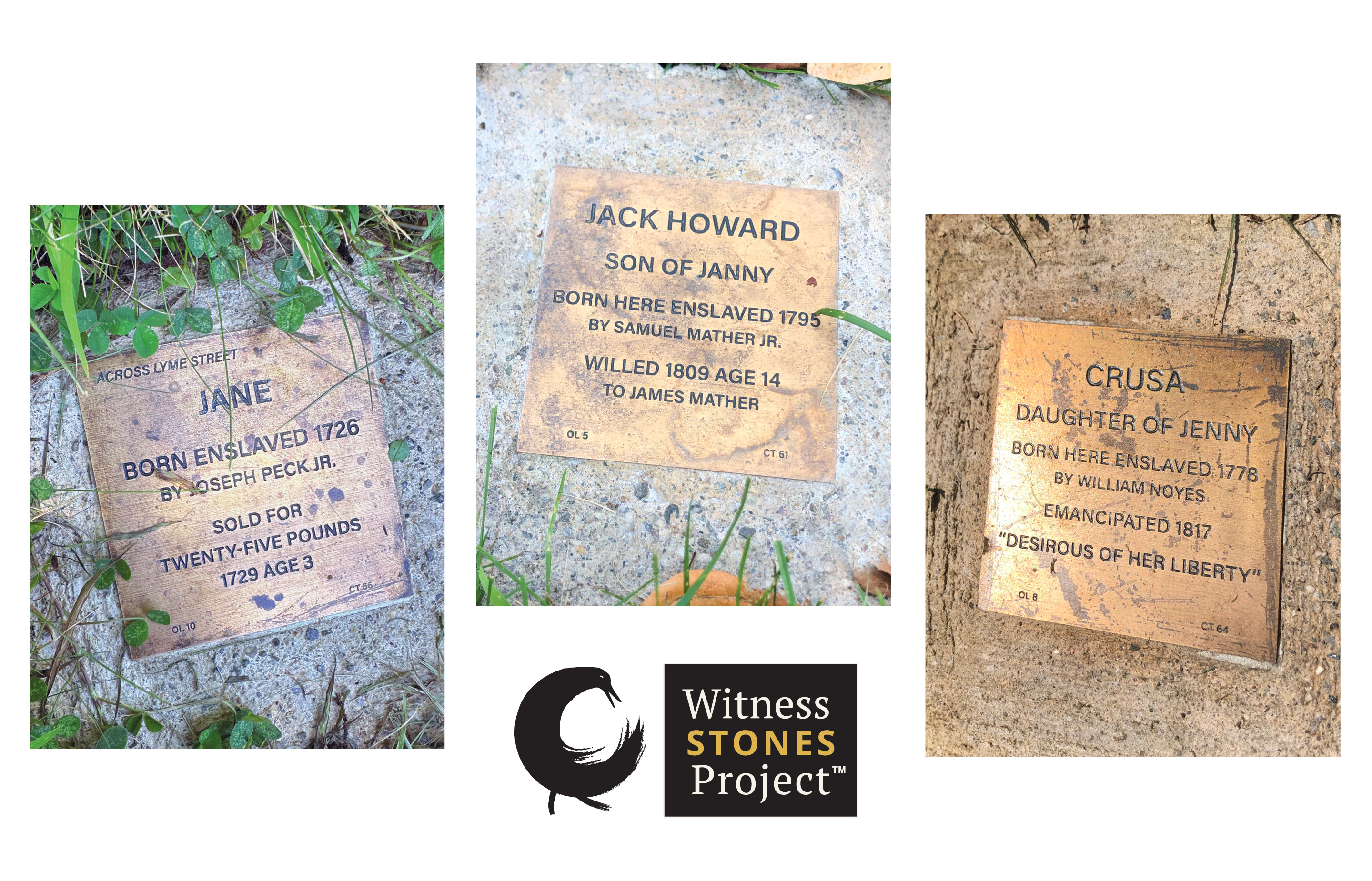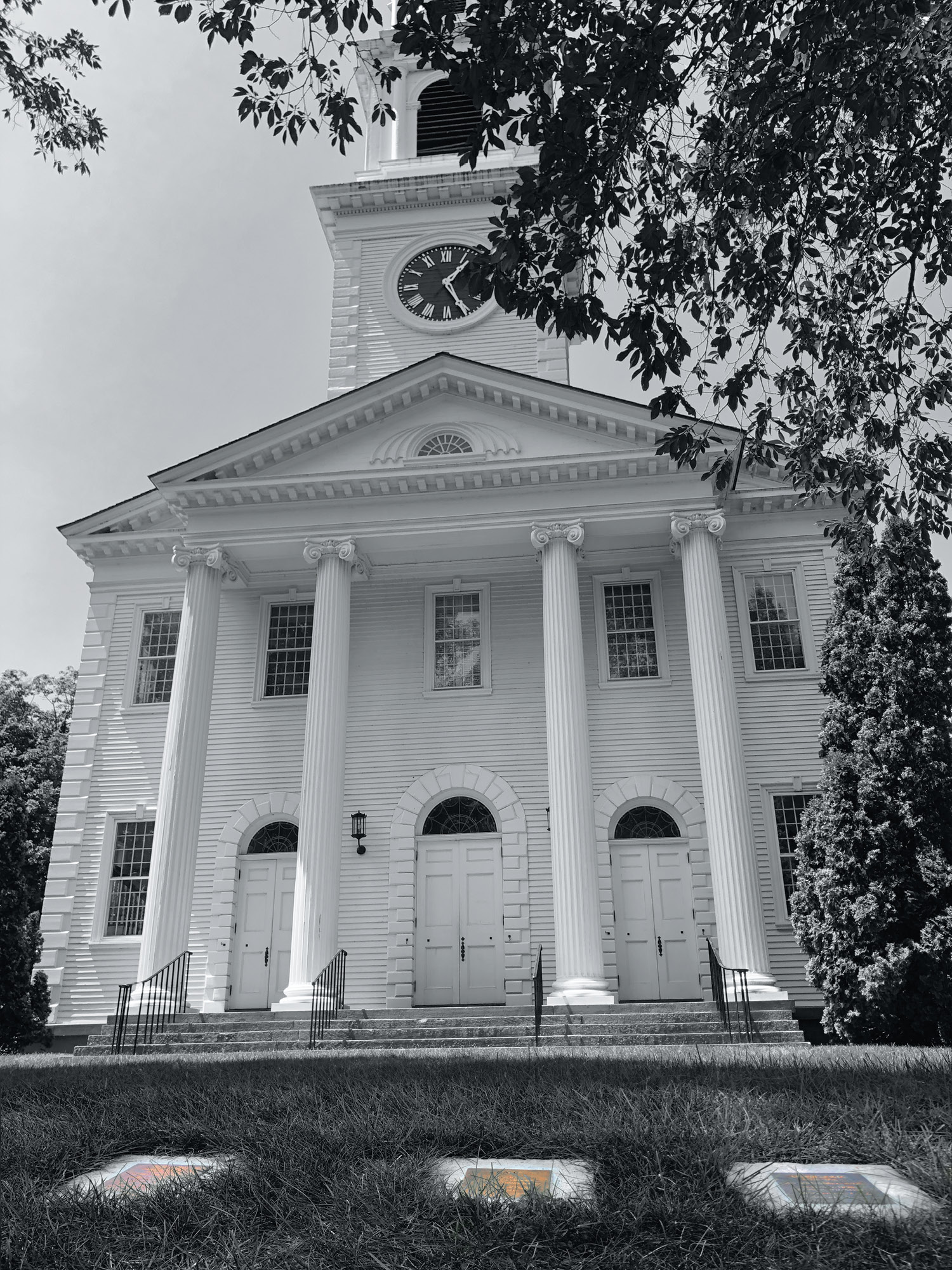Bearing Witness
Professor Kate Rushin’s poetry brings to life the stories of Connecticut residents born into slavery in the 1700s.
About 15 miles from the Connecticut College campus, in picturesque Old Lyme, the house where Jack Howard was born in 1795 still stands. It was built in 1790 by a wealthy shipping merchant named Samuel Mather Jr. and, like so many historic New England homes, it features a plaque near the front door that bears the date of its early post-Revolution construction.
But closer to the sidewalk, in the grass near the walkway that leads to the house, there’s another plaque—this one for Jack.
“Son of Janny,” it reads. “Born here enslaved.”
There are dozens more of these small brass plaques embedded up and down leafy Lyme Street, which, with the exception of power lines and a few parked cars, still looks much like it would have in the late 18th century.
Cato. Enslaved child servant of Rev. Jonathan Parsons. Died here 1734. Age 10.
Caesar. Mariner. Born enslaved 1762. Ran away 1784 [at] age 22 from John McCurdy.
Crusa. Daughter of Jenny. Born here enslaved 1778 by William Noyes. Emancipated 1817. “Desirous of her liberty.”
Jane. Born enslaved 1726 by Joseph Peck Jr. Sold for twenty-five pounds 1729 [at] age 3.



